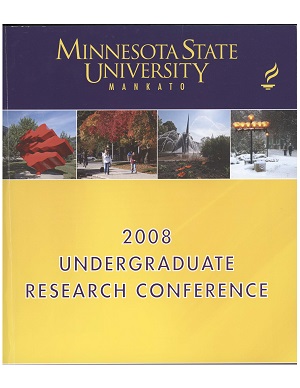The Saqqa-khaneh School of the 1960s: Creating a National Iranian Art Identity
Location
CSU 201
Start Date
21-4-2008 8:00 AM
End Date
21-4-2008 9:45 AM
Student's Major
Art
Student's College
Arts and Humanities
Mentor's Name
Alisa Eimen
Mentor's Department
Art
Mentor's College
Arts and Humanities
Description
Art historical scholarship would lead one to believe that there is a clear distinction between what is considered Western high art and non-Western low art. In Euro-American modem art, artists are praised for their appropriations, interpretations, and subversions of distinctions between high and low, or fine and folk art. A well-known example is Pablo Picasso and his painting Les Demoiselles d'Avignon in which the appropriation of African masks clearly influenced the end product. Yet, when an artist from the non-Western world engages in similar activities, the artwork is often critiqued as derivative, traditional, or even primitive. To a great extent these oppositions between high and low art are rooted in nineteenth-century colonial practices. While European colonization of non-Western regions not only engendered a struggle over power by throwing traditional structures of authority out of balance, it also disrupted local constructions of identity, including the right to self-determination and self-expression, often represented in art. The resulting imbalance of power created two principal responses from non-Westerners: an uncritical appropriation of Euro-American traditions and techniques as well as a wholesale rejection of them. By the mid-twentieth century, however, these two responses had paved the way for a range of other arts practices. For example, artists of Islamic countries had an increased interest in incorporating traditional folk art in with Western art styles. By conducting research on the Saqqa-khaneh artist group from Iran, I have illustrated that such clear distinctions between Western high art and non-Western low art are not so easily drawn.
The Saqqa-khaneh School of the 1960s: Creating a National Iranian Art Identity
CSU 201
Art historical scholarship would lead one to believe that there is a clear distinction between what is considered Western high art and non-Western low art. In Euro-American modem art, artists are praised for their appropriations, interpretations, and subversions of distinctions between high and low, or fine and folk art. A well-known example is Pablo Picasso and his painting Les Demoiselles d'Avignon in which the appropriation of African masks clearly influenced the end product. Yet, when an artist from the non-Western world engages in similar activities, the artwork is often critiqued as derivative, traditional, or even primitive. To a great extent these oppositions between high and low art are rooted in nineteenth-century colonial practices. While European colonization of non-Western regions not only engendered a struggle over power by throwing traditional structures of authority out of balance, it also disrupted local constructions of identity, including the right to self-determination and self-expression, often represented in art. The resulting imbalance of power created two principal responses from non-Westerners: an uncritical appropriation of Euro-American traditions and techniques as well as a wholesale rejection of them. By the mid-twentieth century, however, these two responses had paved the way for a range of other arts practices. For example, artists of Islamic countries had an increased interest in incorporating traditional folk art in with Western art styles. By conducting research on the Saqqa-khaneh artist group from Iran, I have illustrated that such clear distinctions between Western high art and non-Western low art are not so easily drawn.
Recommended Citation
Thompson, Marria. "The Saqqa-khaneh School of the 1960s: Creating a National Iranian Art Identity." Undergraduate Research Symposium, Mankato, MN, April 21, 2008.
https://cornerstone.lib.mnsu.edu/urs/2008/oral-session-01/7



